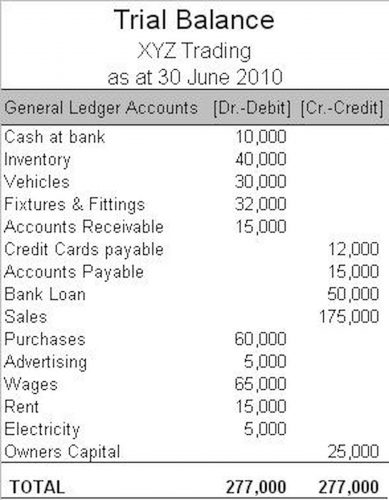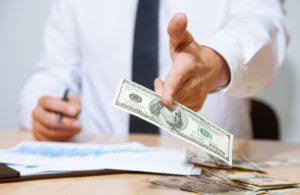
This method accelerates straight-line method by doubling the straight-line rate per year. In most depreciation methods, an asset’s estimated useful life is expressed double declining balance method in years. However, in the units-of-activity method (and in the similar units-of-production method), an asset’s estimated useful life is expressed in units of output.

Over the depreciation process, the double depreciation rate remains constant and is applied to the reducing book value each depreciation period. The declining balance technique represents the opposite of the straight-line depreciation method, which is more suitable for assets whose book value drops at a steady rate throughout their useful lives. This method simply subtracts the salvage value from the cost of the asset, which is then divided by the useful life of the asset. So, if a company shells out $15,000 for a truck with a $5,000 salvage value and a useful life of five years, the annual straight-line depreciation expense equals $2,000 ($15,000 minus $5,000 divided by five).
Example of the double declining balance method
The double declining balance method (DDB) describes an approach to accounting for the depreciation of fixed assets where the depreciation expense is greater in the initial years of the asset’s assumed useful life. The Double Declining Balance Method (DDB) is a form of accelerated depreciation in which the annual depreciation expense is greater during the earlier stages of the fixed asset’s useful life. Therefore, the DDB depreciation calculation for an asset with a 10-year useful life will have a DDB depreciation rate of 20%. In the first accounting year that the asset is used, the 20% will be multiplied times the asset’s cost since there is no accumulated depreciation. In the following accounting years, the 20% is multiplied times the asset’s book value at the beginning of the accounting year. This differs from other depreciation methods where an asset’s depreciable cost is used.
It is most likely to be used when tracking machine hours on a machine that has a useful life of a given number of total machine hours. The depreciation expense calculated by the double declining balance method may, therefore, be greater or less than the units of output method in any given year. Various software tools and online calculators can simplify the process of calculating DDB depreciation. These tools can automatically compute depreciation expenses, adjust rates, and maintain depreciation schedules, making them invaluable for businesses managing multiple depreciating assets. The double declining balance method is an accelerated depreciation method that multiplies twice the straight-line depreciation method.
Everything You Need To Master Financial Modeling
Certain fixed assets are most useful during their initial years and then wane in productivity over time, so the asset’s utility is consumed at a more rapid rate during the earlier phases of its useful life. In the case of an asset with a 10-year useful life, the depreciation expense in the first full year of the asset’s life will be 10/55 times the asset’s depreciable cost. The depreciation for the 2nd year will be 9/55 times the asset’s depreciable cost.
- In the case of an asset with a 10-year useful life, the depreciation expense in the first full year of the asset’s life will be 10/55 times the asset’s depreciable cost.
- This is because, unlike the straight-line method, the depreciation expense under the double-declining method is not charged evenly over the asset’s useful life.
- Given the nature of the DDB depreciation method, it is best reserved for assets that depreciate rapidly in the first several years of ownership, such as cars and heavy equipment.
- The double declining balance method of depreciation reports higher depreciation charges in earlier years than in later years.
- However, if the company later goes on to sell that asset for more than its value on the company’s books, it must pay taxes on the difference as a capital gain.
- Starting off, your book value will be the cost of the asset—what you paid for the asset.
The current year depreciation is the portion of a fixed asset’s cost that we deduct against current year profit and loss. The accounting concept behind depreciation is that an asset produces revenue over an estimated number of years; therefore, the cost of the asset should be deducted over those same estimated years. The double-declining balance method multiplies twice the straight-line method percentage by the beginning book value each period.
How Does the Double Declining Balance Method Compare Against Other Depreciation Methods?
Insights on business strategy and culture, right to your inbox.Part of the business.com network. Get instant access to video lessons taught by experienced investment bankers. Learn financial statement modeling, DCF, M&A, LBO, Comps and Excel shortcuts. Harold Averkamp (CPA, MBA) has worked as a university accounting instructor, accountant, and consultant for more than 25 years.
- By applying the DDB depreciation method, you can depreciate these assets faster, capturing tax benefits more quickly and reducing your tax liability in the first few years after purchasing them.
- So your annual write-offs are more stable over time, which makes income easier to predict.
- This may be true with certain computer equipment, mobile devices, and other high-tech items, which are generally useful earlier on but become less so as newer models are brought to market.
- Companies can (and do) use different depreciation methods for each set of books.
- This is preferable for businesses that may not be profitable yet and therefore may not be able to capitalize on greater depreciation write-offs, or businesses that turn equipment over quickly.
Start by computing the DDB rate, which remains constant throughout the useful life of the fixed asset. However, depreciation expense in the succeeding years declines because we multiply the DDB rate by the undepreciated basis, or book value, of the asset. Employing the accelerated depreciation technique means there will be smaller taxable income in the earlier years of an asset’s life. You calculate it based on the difference between your cost basis in the asset—purchase price plus extras like sales tax, shipping and handling charges, and installation costs—and its salvage value. The salvage value is what you expect to receive when you dispose of the asset at the end of its useful life.
